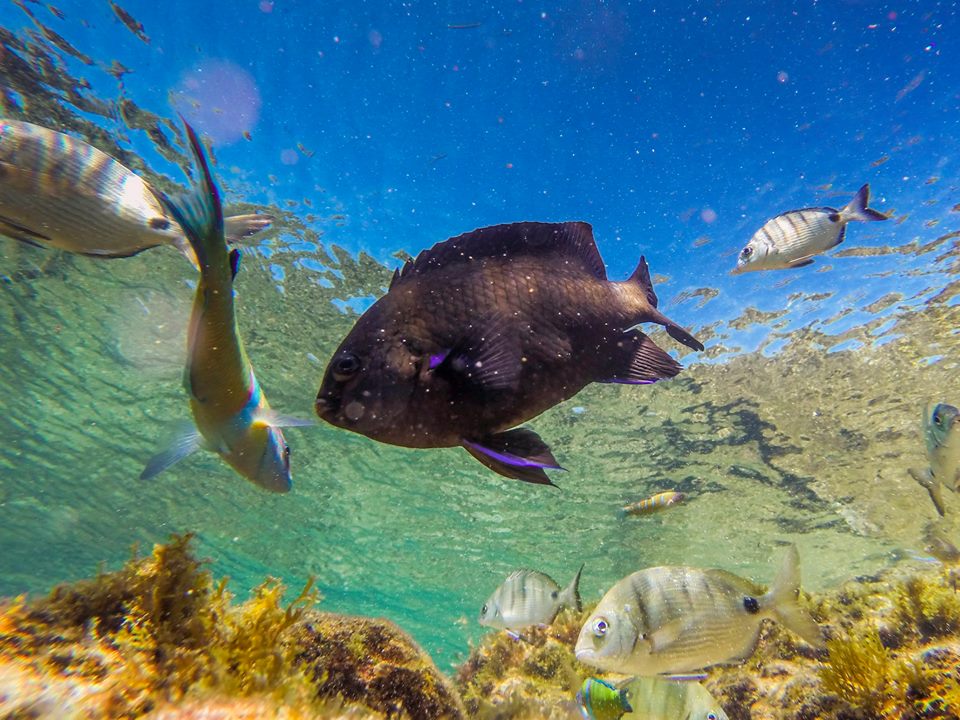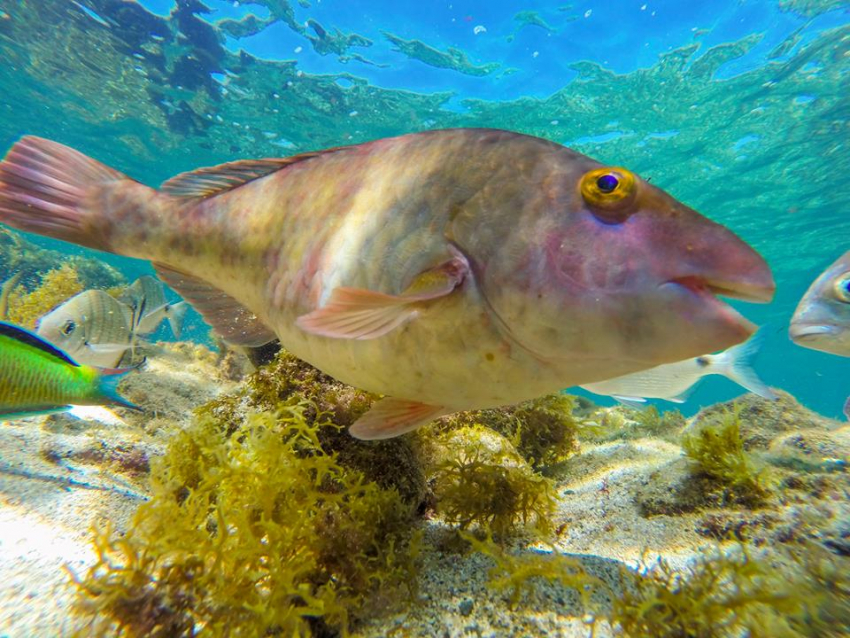 Every year more people travel here just to enjoy the vibrant colours, the amazing variety of species, and the warm waters which surround the Island. Gran Canaria is the most southerly of the tourist islands, and because of the warming effect of the Gulf Stream, you can dive here all year round.
Every year more people travel here just to enjoy the vibrant colours, the amazing variety of species, and the warm waters which surround the Island. Gran Canaria is the most southerly of the tourist islands, and because of the warming effect of the Gulf Stream, you can dive here all year round.
There are diving experiences for everyone from complete beginners to experts who have completed several hundred dives or more. If you have never dived before, but always wanted to experience floating weightless among the fish, then there are many Professional Dive Centres around the Island who will help you take the first step to explore the oceans.
If you are not sure about diving underneath the waves then there is still much that can be seen from the surface. You can snorkel from many places around the coast, and at Las Canteras, Arguineguín, Amadores and Mogan the breakwaters have created some very sheltered areas where there are good opportunities to snorkel. Some of the leading dive centres also arrange snorkel excursions for small groups where you are accompanied by a guide.
For those who want to take the next step, and gain a PADI diving qualification, there are professional schools where the instructors come from all over Europe and courses are taught in English and other major languages. All the diving centres are regulated and checked by the government so the teaching and facilities are among the best in the world.
 Finally, for those with experience of diving there are so many things to see and explore! In the north there are some of the biggest wrecks in the Canaries, including the Angelo Pando, and the Arona. The Cathedral is also accessed from Las Palmas and is an underwater maze of caverns and tunnels famous throughout the islands.
Finally, for those with experience of diving there are so many things to see and explore! In the north there are some of the biggest wrecks in the Canaries, including the Angelo Pando, and the Arona. The Cathedral is also accessed from Las Palmas and is an underwater maze of caverns and tunnels famous throughout the islands.
The site that all tourists should include is the ‘el Cabrón Marine Reserve, in the east near the sleepy fishing village of Arinaga. Here the dramatic underwater scenery has been shaped by a combination of volcanic activity and changing sea levels to create caves, tunnels, arches and cliffs. But the waters are also unusually rich in sea-life and the University described it as “one of the richest in fish species of the Canary Islands” . Here you need a macro lens on your camera to photograph seahorses or the stunning flabellina nudibranch, and a wide angle for angel sharks, rays and the big shoals of roncadors.
Close to the tourist areas of the southeast there are dive sites which are accessible by boat, of which the most popular are the wrecks of Mogan, and the artificial and natural reefs near Pasito Blanco, where you get shoals of grunts (roncadores), morays and rays.
 There are underwater surprises to be found all around the Island, with angel sharks in winter and butterfly rays in summer, and the chance of something special like a turtle or manta ray at many of the most popular spots.
There are underwater surprises to be found all around the Island, with angel sharks in winter and butterfly rays in summer, and the chance of something special like a turtle or manta ray at many of the most popular spots.
Talk to any of the professional dive centres on the Island and you are sure to get good advice, a great deal of help and a safe dive.
Text by Brian Goldthorpe of Davy Jones Diving: The best dive shop on the east coast and the go to experts for the El Carbon dive sites.
If you want to experience diving for the first time or get a PADI qualification, we wholeheartedly recommend Blue Explorers in Taurito resort. They do things properly and make sure you have a good experience.














